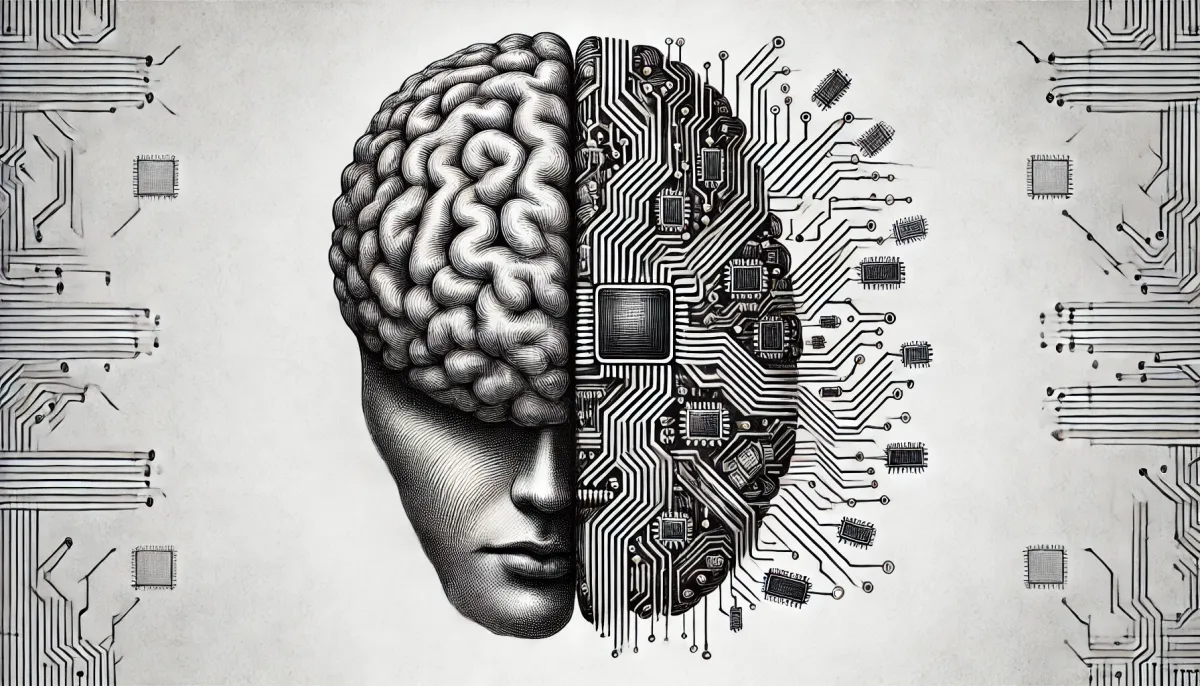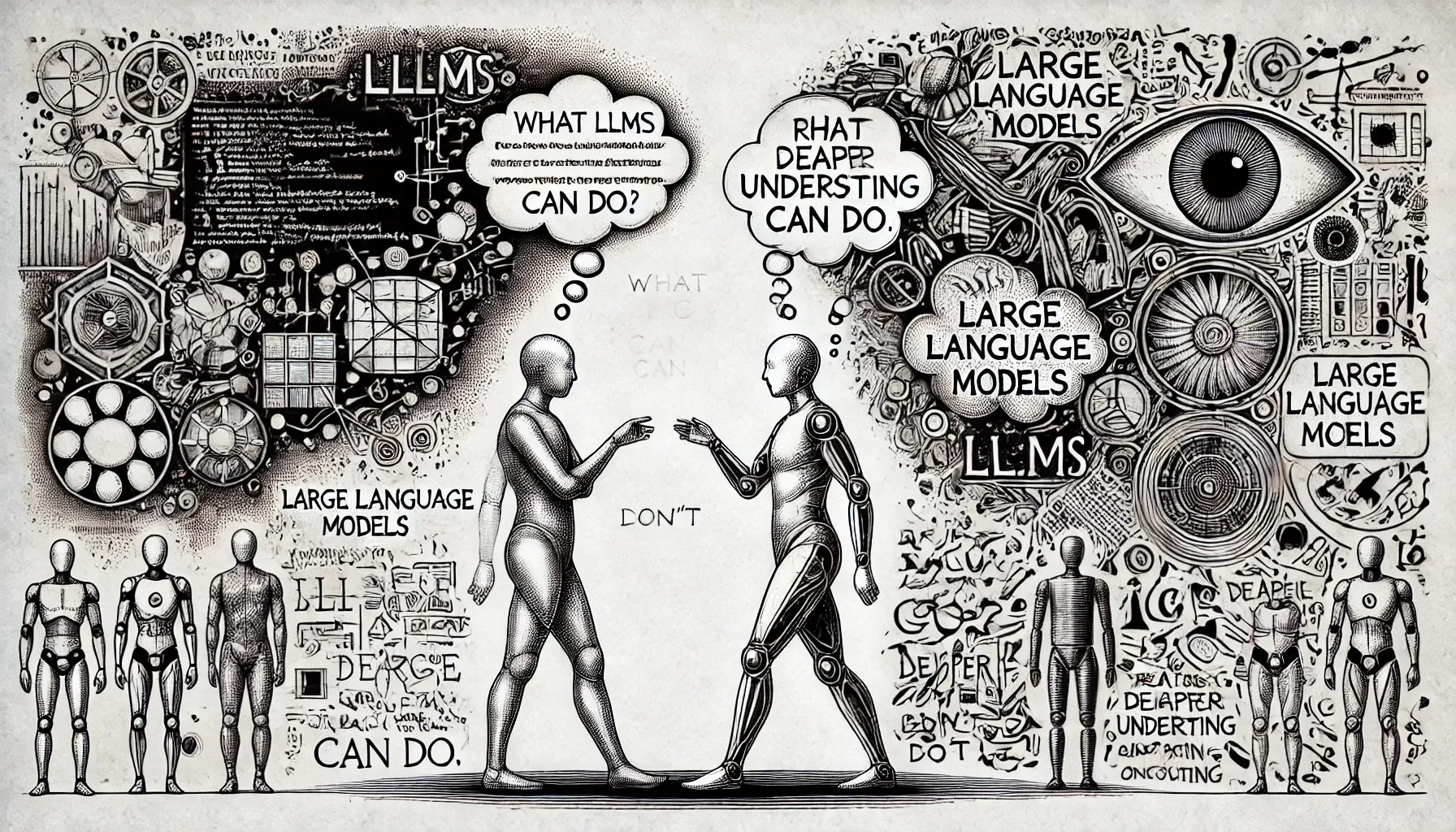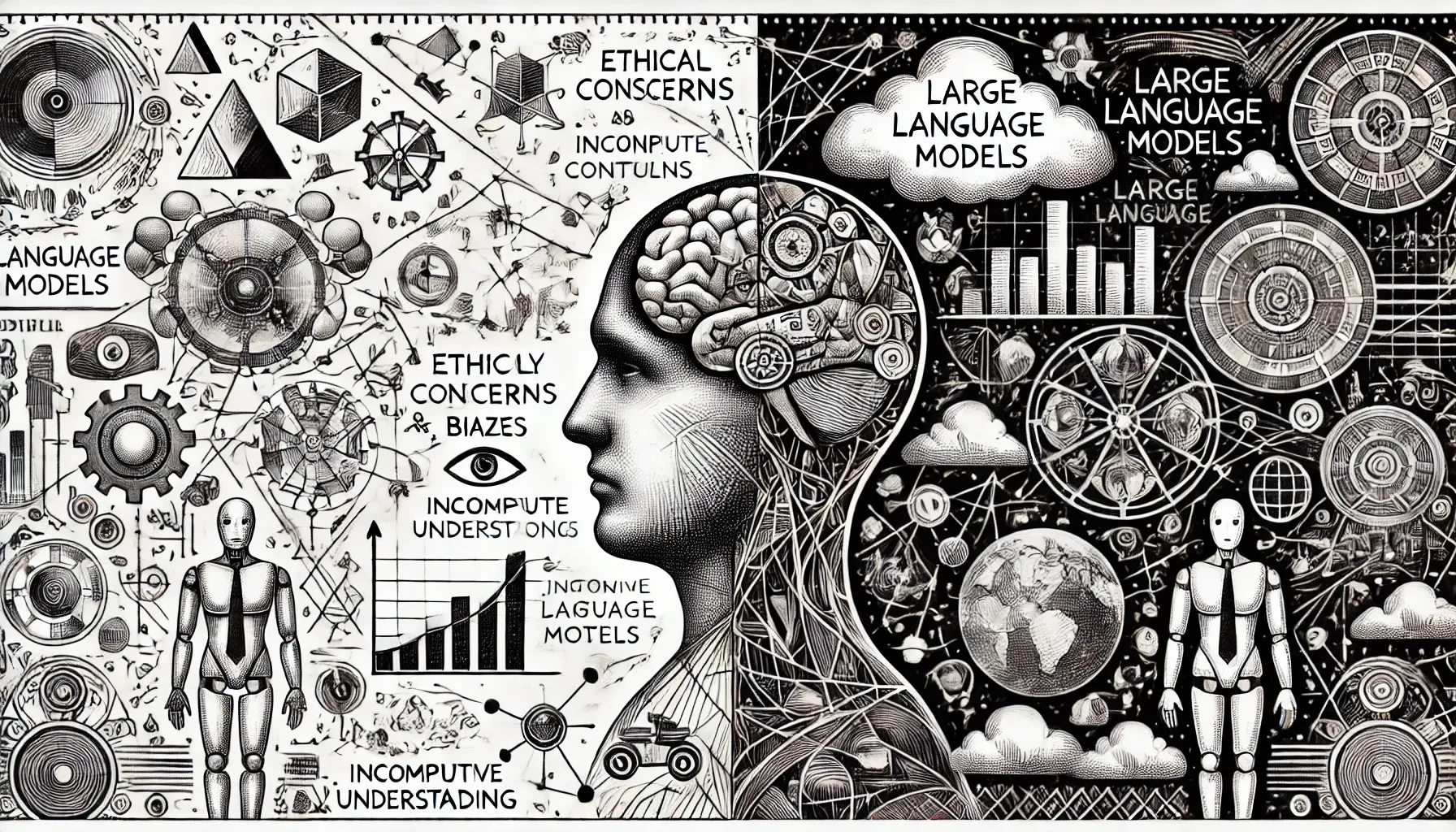The AI Revolution: Unraveling the Mystery of Large Language Models
In this article, we'll explore the world of AI and LLMs, breaking down complex concepts into digestible bits.

Introduction
Artificial Intelligence (AI) has become the talk of the town, with Large Language Models (LLMs) taking center stage. But what's all the excitement about? In this article, we'll explore the world of AI and LLMs, breaking down complex concepts into digestible bits. Whether you're a tech enthusiast or just curious about the future, this guide will help you understand why AI is making waves and what it means for our daily lives.
Understanding AI and Large Language Models
At its core, AI is about creating machines that can think and learn like humans. Large Language Models are a specific type of AI that focuses on understanding and generating human language. Imagine having a super-smart assistant that can chat with you, write essays, or even code a website. That's the promise of LLMs.
These models work by predicting language patterns. They've been trained on massive amounts of text data – billions of words from books, articles, and websites. It's as if they've read everything ever written and can now predict what words should come next in any sentence. While this might sound like science fiction, it's very much a reality today.
Why AI is Booming Now
The sudden rise of AI and LLMs isn't a coincidence. It's the result of several factors coming together at the right time. First, we've seen a massive increase in computing power. The computers we have today are incredibly fast and can process enormous amounts of data quickly.
Second, the internet has provided a goldmine of text data. Every tweet, blog post, and news article becomes potential training material for these language models. Finally, researchers have developed clever new ways to train these models, like the Transformer architecture, which has revolutionized how AI understands language.
These advancements have made it possible to create AI models that are more capable than ever before. However, it's worth noting that developing these models is no small feat. It requires vast resources, both in terms of computing power and financial investment. That's why we typically see large tech companies at the forefront of this technology.
Real-World Applications and Impact
AI and LLMs are already changing the way we interact with technology. Customer service chatbots, AI writing assistants, and improved search engines are just a few examples of how this technology is being put to use. In the creative world, we're seeing AI-generated art, music, and even screenplays.
But the impact goes beyond just cool gadgets and tools. AI is being used in scientific research, potentially speeding up discoveries in fields like medicine and climate science. It's also reshaping education, with the potential for personalized tutoring and automated grading.
However, with great power comes great responsibility. The rise of AI also brings important ethical questions. How do we ensure AI doesn't perpetuate harmful biases? What about privacy concerns when these models are trained on vast amounts of data? And how will AI impact jobs and the workforce? These are complex issues that society will need to grapple with as AI becomes more prevalent.

Understanding the Limits: What LLMs Can and Can't Do
It's important to clarify that Large Language Models, as their name suggests, are specifically designed to work with text. They can generate, understand, and manipulate written language, but they can't directly produce images or music. When I mentioned AI-generated art or music earlier, I was referring to different types of AI models, not LLMs. Let's break this down:
- Text-Based Tasks (LLMs): Large Language Models like GPT-3 or BERT are excellent at text-related tasks. They can write essays, answer questions, summarize texts, or even generate code. But they're limited to the realm of words and characters.
- Image Generation (GANs and Diffusion Models): For creating images, different AI models are used. Generative Adversarial Networks (GANs) and more recently, diffusion models like DALL-E or Midjourney, are designed specifically for image creation. These models are trained on vast datasets of images and can generate new, original images based on text descriptions.
- Music Generation: Similarly, AI models for music generation are distinct from LLMs. These specialized models are trained on musical data and can compose new melodies or even entire songs. Examples include OpenAI's MuseNet or Google's Magenta project.
While these different types of AI models (text, image, music) are separate, they can work together in interesting ways. For instance, you might use an LLM to generate a text description, which is then fed into an image generation model to create a corresponding picture. This combination of different AI technologies is an exciting area of research and development.
It's also worth noting that there are efforts to create "multimodal" AI models that can handle different types of data (text, images, sound) simultaneously, but these are still in the early stages and are distinct from traditional LLMs.
Understanding the "Billions" in AI Models
When we talk about billions in the context of AI models, we're typically referring to the number of parameters in the model. Parameters are the key to understanding how these models work and why their size matters. Think of them like synapses in the human brain.
Parameters are essentially the individual pieces of information that an AI model learns during its training process. You can think of them as the "knowledge" or "skills" the model acquires. Each parameter is a number that the model adjusts as it learns from data.
Capacity for Knowledge: More parameters generally mean the model can store and process more information. It's like having a bigger brain with more neurons.
Complexity: Models with more parameters can potentially understand and generate more complex patterns in language or data.
Performance: Generally, models with more parameters can perform a wider range of tasks more effectively. They tend to produce more nuanced and contextually appropriate responses.
Flexibility: Larger models are often more adaptable to different tasks without needing specific training for each one.
Examples in Numbers:
- GPT-3: Approximately 175 billion parameters
- GPT-2: 1.5 billion parameters
- BERT (base): 110 million parameters
Reaching the billion-parameter mark is seen as a significant milestone in AI development. Models with billions of parameters, like GPT-3 and its successors, have shown remarkable capabilities in understanding and generating human-like text.
While more parameters often correlate with better performance, it's not always a simple "bigger is better" scenario:
Diminishing Returns: There's a point where adding more parameters yields smaller improvements.
Computational Costs: Larger models require more computational power to train and run, which is expensive and energy-intensive.
Efficiency Matters: Researchers are also working on creating smaller, more efficient models that can perform well with fewer parameters.
Task Specificity: Sometimes, a smaller model specifically trained for a particular task can outperform a larger, more general model.
As AI research progresses, we're seeing a dual trend:
- Push for even larger models to tackle more complex tasks
- Development of more efficient architectures that can do more with fewer parameters
The Price Tag of AI: Training Costs of Popular Models
Developing large AI models is not just a technical challenge; it's also a significant financial undertaking. The costs associated with training these models can be staggering, often running into millions of dollars.
GPT-3 (OpenAI) Estimated Cost: $4.6 million - $12 million GPT-3, with its 175 billion parameters, is one of the most expensive models to train. The wide range in the estimate is due to variations in hardware costs and efficiency.
GPT-2 (OpenAI) Estimated Cost: $256,000 Significantly smaller than GPT-3, GPT-2's training costs were correspondingly lower.
BERT (Google) Estimated Cost: $6,912 BERT's training cost was relatively low compared to larger models, but this is for a single training run. Google likely ran multiple training sessions and variations.
AlphaGo Zero (DeepMind) Estimated Cost: $35 million While not a language model, AlphaGo Zero's training cost showcases the high expenses in cutting-edge AI development.
Megatron-Turing NLG (Microsoft and NVIDIA) Estimated Cost: Over $85 million This 530-billion parameter model is one of the largest and most expensive to train.
Why Are Companies Willing to Invest So Much?
- Competitive Advantage: Leading in AI technology can provide significant market advantages.
- Research Value: These models serve as platforms for further AI research and development.
- Commercial Applications: The potential for commercial applications and services based on these models can justify the high initial investment.
- Long-term Cost Efficiency: Once trained, these models can be applied to various tasks without needing full retraining, potentially saving costs in the long run.
It's important to note that these figures are estimates, and the actual costs are often closely guarded by the companies developing these models. Additionally, as technology improves and becomes more efficient, the cost of training similar models may decrease over time.
The high costs associated with training these models also highlight why only large tech companies or well-funded research institutions are typically able to develop the most advanced AI systems, raising questions about the democratization of AI technology and its implications for innovation and competition in the field.

Limitations and Future Outlook
Despite all the hype, it's crucial to remember that AI and LLMs have their limitations. While they can generate impressively human-like text, they don't truly understand meaning the way we do. They're pattern-matching machines, not conscious entities. Sometimes they can produce text that sounds great but is completely false or nonsensical.
Looking to the future, we can expect AI to become even more advanced. We might see models that can understand not just text, but images and video too. There's also work being done to create smaller, more efficient AI models that could run on everyday devices like smartphones.
As AI continues to evolve, it's likely to become an increasingly important part of our lives. While it won't replace human intelligence, it has the potential to augment our capabilities in remarkable ways.
Conclusion
The AI revolution is just beginning, and it's an exciting time to be alive. As we move forward, it's important to stay informed and think critically about these technologies. Understanding the basics of how AI and LLMs work can help us make better decisions about how to use them in our lives and in society.
Remember, AI and LLMs are tools – incredibly sophisticated tools, but tools nonetheless. They have the potential to make our lives easier and more productive in many ways. But they're not magic, and they're certainly not going to solve all of our problems overnight.
Recommended Reading: Diving Deeper into AI and Machine Learning
For those interested in exploring the world of AI and machine learning further, here's a curated list of books that offer valuable insights, from beginner-friendly introductions to more advanced concepts:
"Artificial Intelligence: A Modern Approach" by Stuart Russell and Peter Norvig - a comprehensive textbook that covers the fundamentals of AI. It's widely used in university courses and is excellent for beginners and intermediate learners.
"Deep Learning" by Ian Goodfellow, Yoshua Bengio, and Aaron Courville - an in-depth exploration of deep learning techniques, suitable for those with a strong mathematical background.
"Hands-On Machine Learning with Scikit-Learn, Keras, and TensorFlow" by Aurélien Géron - a practical guide that combines theory with hands-on examples, great for those who want to start building AI models.
"The Hundred-Page Machine Learning Book" by Andriy Burkov - a concise yet comprehensive overview of machine learning concepts, ideal for busy professionals.
"AI Superpowers: China, Silicon Valley, and the New World Order" by Kai-Fu Lee - offers insights into the global AI landscape and its potential impact on society and the economy.
"Human Compatible: Artificial Intelligence and the Problem of Control" by Stuart Russell - explores the potential risks and challenges of advanced AI systems and proposes approaches for beneficial AI development.
"The Alignment Problem: Machine Learning and Human Values" by Brian Christian - discusses the challenges of aligning AI systems with human values and ethics.
"Grokking Deep Learning" by Andrew Trask - a beginner-friendly introduction to deep learning that focuses on building intuition alongside practical skills.
"Life 3.0: Being Human in the Age of Artificial Intelligence" by Max Tegmark - explores the potential future scenarios involving advanced AI and their implications for humanity.
"The Master Algorithm: How the Quest for the Ultimate Learning Machine Will Remake Our World" by Pedro Domingos - provides an accessible overview of different machine learning approaches and their potential to create a universal learning algorithm.
"Superintelligence: Paths, Dangers, Strategies" by Nick Bostrom - a thought-provoking look at the potential long-term future of AI and its implications for humanity.
"Prediction Machines: The Simple Economics of Artificial Intelligence" by Ajay Agrawal, Joshua Gans, and Avi Goldfarb - examines the economic implications of AI, making it particularly relevant for business leaders and policymakers.
These books cover a range of topics and difficulty levels, from technical guides to philosophical explorations of AI's impact on society. Whether you're a beginner looking to understand the basics or an experienced practitioner wanting to deepen your knowledge, there's something here for everyone interested in the fascinating world of AI and machine learning.
References:
- Brown, T. B., et al. (2020). Language Models are Few-Shot Learners. arXiv preprint arXiv:2005.14165. (Information on GPT-3)
- Vaswani, A., et al. (2017). Attention Is All You Need. arXiv preprint arXiv:1706.03762. (Original paper on Transformer architecture)
- Devlin, J., et al. (2018). BERT: Pre-training of Deep Bidirectional Transformers for Language Understanding. arXiv preprint arXiv:1810.04805. (Information on BERT)
- OpenAI. (2023). GPT-4 Technical Report. https://arxiv.org/abs/2303.08774 (Details on GPT-4 capabilities)
- Google. (2023). Gemini: A Family of Highly Capable Multimodal Models. https://blog.google/technology/ai/google-gemini-ai/ (Information on Google's Gemini model)
- Anthropic. (2023). Introducing Claude. https://www.anthropic.com/index/introducing-claude (Details on Claude AI)
- Radford, A., et al. (2019). Language Models are Unsupervised Multitask Learners. OpenAI Blog. (Information on GPT-2)
- Silver, D., et al. (2017). Mastering the game of Go without human knowledge. Nature, 550(7676), 354-359. (Information on AlphaGo Zero)
- Patterson, D., et al. (2021). Carbon Emissions and Large Neural Network Training. arXiv preprint arXiv:2104.10350. (Estimates of AI training costs and environmental impact)
- Strubell, E., Ganesh, A., & McCallum, A. (2019). Energy and Policy Considerations for Deep Learning in NLP. arXiv preprint arXiv:1906.02243. (Information on computational costs of training AI models)
- OpenAI. (2023). ChatGPT: Optimizing Language Models for Dialogue. https://openai.com/blog/chatgpt/ (Information on ChatGPT)
- Google AI Blog. (2020). Open-Sourcing BERT: State-of-the-Art Pre-training for Natural Language Processing. https://ai.googleblog.com/2018/11/open-sourcing-bert-state-of-art-pre.html (Additional information on BERT)
- Bommasani, R., et al. (2021). On the Opportunities and Risks of Foundation Models. arXiv preprint arXiv:2108.07258. (Overview of large language models and their implications)
- Microsoft. (2022). Using DeepSpeed and Megatron to Train Megatron-Turing NLG 530B. https://www.microsoft.com/en-us/research/blog/using-deepspeed-and-megatron-to-train-megatron-turing-nlg-530b-the-worlds-largest-and-most-powerful-generative-language-model/ (Information on Megatron-Turing NLG model)